How to Create an Effective Omnichannel Customer Journey?
An omnichannel customer journey encompasses the entire customer lifecycle, from initial awareness to purchase and post-purchase interactions.
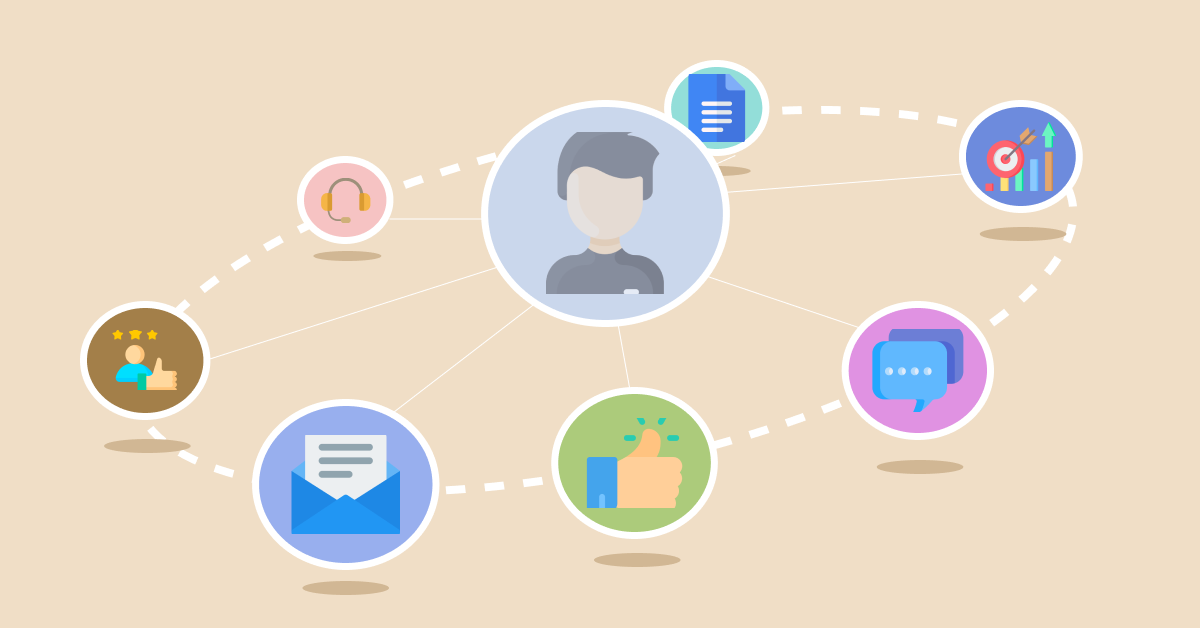
An omnichannel customer journey encompasses the entire customer lifecycle, from initial awareness to purchase and post-purchase interactions.

Have you ever experienced frustration when trying to navigate a company’s website, only to be redirected to a different channel for assistance? This is where an effective omnichannel customer journey comes into play. Companies with strong commitments to the omnichannel customer retain 89% of their customers on average
Crafting a successful customer journey across multiple channels may appear challenging, but it doesn’t need to be. Employing the appropriate approach and resources allows you to give a smooth customer experience (CX) that leaves a memorable impact on your clientele. Therefore, if you’re eager to elevate your customer experience, continue perusing.
An omnichannel customer journey is defined as a seamless, integrated approach to customer experience across all touchpoints and channels, be it physical or digital. Unlike multichannel approaches, omnichannel ensures consistent, interconnected interactions as customers move between platforms.
The approach is paramount in the current retail and service scene for several reasons. Modern customers expect fluid transitions between channels, often starting research on mobile devices and completing purchases in-store, a clear sign of omnichannel trends. The omnichannel strategies drive higher customer loyalty and spending, with research showing omnichannel customers spend 15-30% more than single-channel customers. It provides valuable data insights by tracking customer behavior across all touchpoints, enabling personalized experiences and better decision-making.
Key Principles:
The omnichannel customer journey map involves identifying key omnichannel touchpoints that customers go through, from research to post-purchase service. Here’s an overview of each stage:

Research: Customers initiate the journey by conducting research to gather information about products or services. The stage often involves online searches, reading reviews, seeking recommendations, and comparing options.
Shop: Once customers have gathered information, they move on to the shopping stage. Here, they actively explore different channels, such as physical stores, websites, or mobile apps, to evaluate products, compare prices, and make informed decisions.
Buy: The buying stage involves the actual purchase transaction. Buyers can select their purchases either online, in-store or by combining both methods. People can choose the things they like, put them in their cart, enter their payment information, and confirm the purchase.
Pickup: In cases where customers choose click-and-collect or buy online, pick up in-store (BOPIS) options, the pickup stage comes into play. Customers visit the designated location to collect their purchased items, experiencing a seamless transition from online to offline.
Service: The service stage focuses on post-purchase support and assistance. It encompasses activities such as customer service inquiries, returns or exchanges, product troubleshooting, and ongoing customer engagement. Businesses strive to deliver excellent service to maintain customer satisfaction and loyalty.
The omnichannel customer journey involves multiple stages that businesses need to implement to create a cohesive and consistent customer experience. Let us take a closer look at how it actually works:
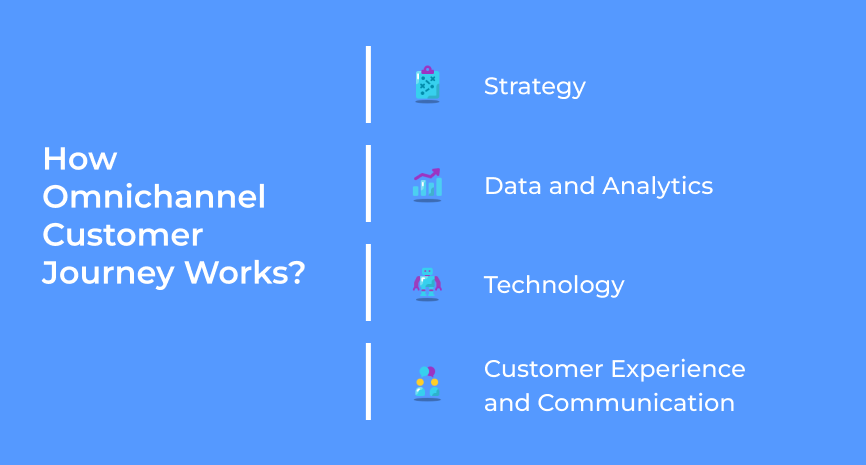
Below are the key reasons why embracing an omnichannel customer journey is not just beneficial but essential for modern businesses looking to succeed in an increasingly interconnected world.
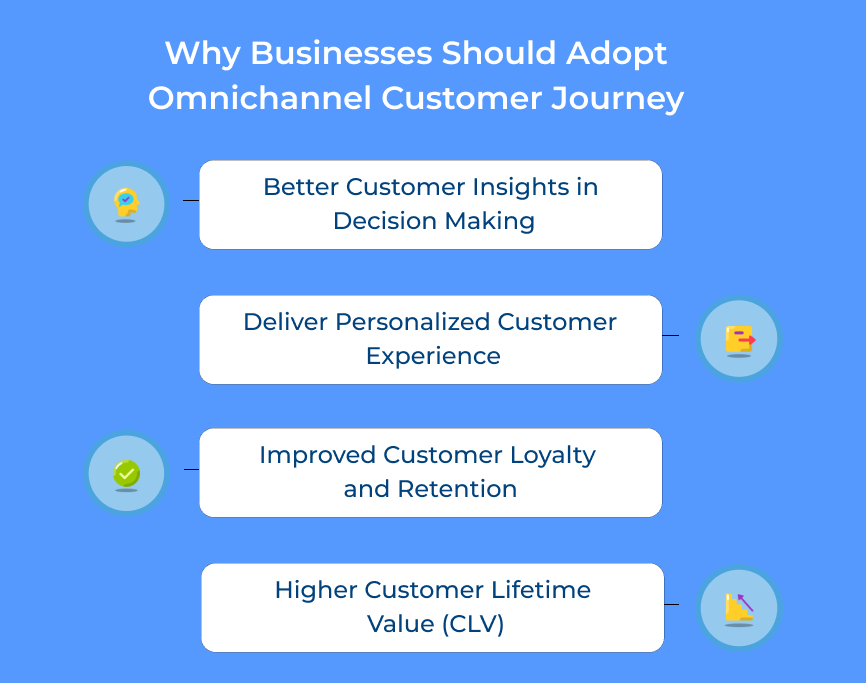
Below are the best practices for designing an impactful omnichannel customer journey that keeps your customers engaged and satisfied at every step.
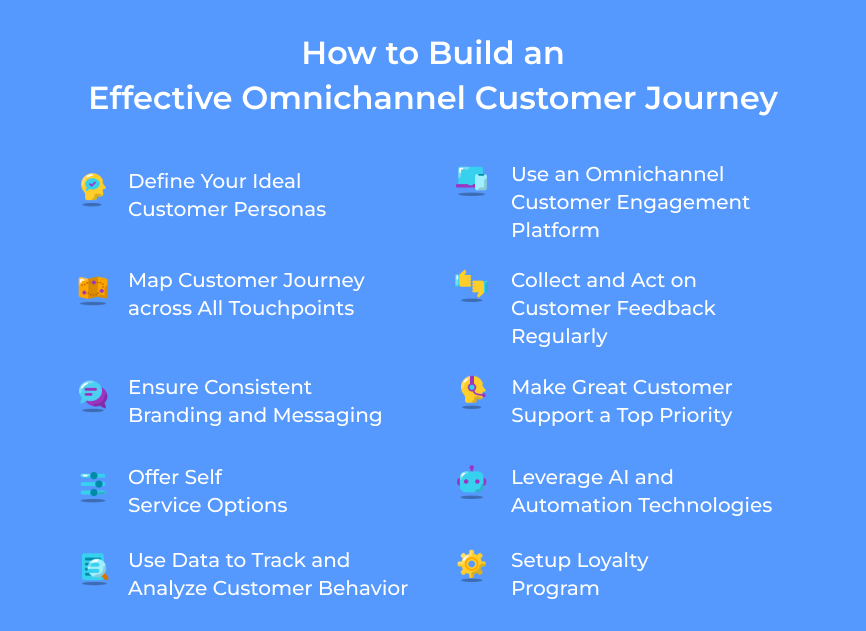
One of the main obstacles faced by businesses nowadays is reaching the right customers successfully. If you don’t have a proper grasp of your ideal customers, creating an efficient all-in-one customer experience becomes challenging. If you want to ensure you accurately define your customer profiles, you must delve into the data to identify crucial traits that provide insights into their behaviors, preferences, and challenges.
Conduct research through customer surveys, website analytics, and social media channels to gather important data. Segment the customers into different groups. It allows businesses to craft comprehensive customer profiles that steer their marketing endeavors and guarantee effective communication with their target audience.
Best practices:
Customer journey mapping involves understanding the various stages a customer goes through from initial awareness to post-purchase follow-up, and then identifying all the touchpoints where the customer interacts with your brand. Mapping these touchpoints can help businesses identify areas where they can improve customer experiences.
Businesses should first identify all the potential touchpoints where the customer can interact with their brand to start mapping the customer journey. It includes everything from social media, online reviews, and website interactions to in-store experiences.
Best practices:
Consistent branding ensures that customers recognize and trust your brand, while consistent messaging helps to reinforce your brand values. Start by defining your brand guidelines and messaging framework to ensure consistent branding.
Ensure consistent tone, voice, and visual elements on all platforms. It facilitates a unified brand encounter for customers, regardless of their interaction points. Regularly review your brand guidelines and messaging framework to keep them aligned with your business goals.
Best practices:
Brands must adopt an omnichannel approach to omnichannel customer service that integrates all channels to deliver a consistent and satisfying experience. It must also be ensured that customers are provided with self-service options. 88% of customers expect companies to offer an online self-service portal.
Self-service options such as chatbots can reduce wait times, improve resolution rates and provide 24/7 support. It has the dual benefit of increasing customer happiness and allowing staff to concentrate on intricate matters, ultimately resulting in cost savings.
Best practices:
Brands that leverage customer data effectively in decision-making can build effective omnichannel journeys. Businesses can learn valuable information about how customers engage with their brand through various channels by observing and examining customer behavior. With the information, businesses can create a more seamless customer journey that meets the needs of their customers at every touchpoint.
Using data to track customer behavior can help businesses identify pain points and opportunities for improvement in the customer journey. Analyzing the data allows businesses to optimize each touchpoint in the customer journey, creating a more effective omnichannel experience that leads to increased customer satisfaction and loyalty.
Best practices:
Employing a platform for comprehensive customer engagement is crucial to ensure a successful customer experience across various channels. Having such a platform in place will help businesses effortlessly connect with customers through different channels like email, social media, and SMS, while also gaining a cohesive overview of customer interactions.
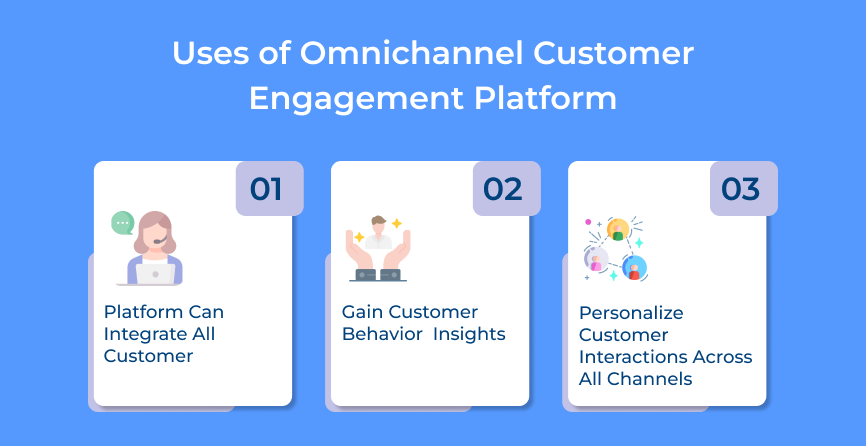
With platforms like Omni24, brands can create personalized and relevant experiences for customers throughout their entire journey. Monitoring and studying how customers interact through various platforms will enable you to make informed choices to enhance customer satisfaction.
Best practices:
Collecting and acting on customer feedback is crucial for building an effective omnichannel journey. Regularly seeking out feedback from customers can give valuable insights into their needs, preferences, and pain points. With the information, businesses can create a more seamless customer journey that meets the needs of their customers at every touchpoint.
Acting on customer feedback requires a commitment to continuous improvement. It’s important to gather feedback, examine it, and implement changes to enhance performance. It could mean adjusting procedures or systems, training staff to better serve customers, or creating improved products or services that meet customer requirements more effectively.
Best practices:
Providing great customer support is paramount in building an effective omnichannel customer journey. Customers expect seamless communication and exceptional service throughout their entire interaction with a business, regardless of the channel they choose to engage in. Providing such a level of support not only promotes customer loyalty and satisfaction but also has a direct impact on your bottom line.
Businesses must prioritize training and empowering their customer support teams with the necessary resources. Implementing a customer-first approach across all channels and investing in technology that streamlines communications can also contribute to a successful omnichannel strategy customer journey. Ultimately, making great customer support a top priority will help businesses build a strong reputation and set them apart from competitors.
Best practices:
The rise of AI and automation technologies has made it easier than ever to create an effective omnichannel experience that enhances customer engagement and drives revenue growth. Harnessing such technologies can personalize customer interactions, automate repetitive tasks, and gain insights into customer behavior.
More than 70% of top executives believe that AI will allow their organization to grow and achieve a competitive edge. It can enable businesses to offer a seamless and efficient customer journey across all touchpoints, from social media to email marketing to in-store experiences. Incorporating AI can also increase operational efficiency, reduce costs, and improve ROI.
Best practices:
A loyalty program is a powerful tool for building customer loyalty and enhancing the omnichannel customer journey. Start by defining your objectives and identifying your target market. Decide on the type of rewards you’ll offer, such as discounts, cashback, or exclusive offers, and determine the criteria for earning rewards. You’ll also need to choose a platform for managing and tracking customer loyalty points.
After establishing your loyalty program, it’s crucial to make sure it’s smoothly connected with your various marketing activities across channels, including email campaigns and social media promotions. Utilizing customer data and understanding enables you to customize your loyalty program according to individual customer requirements.
Best practices:
Explore the key hurdles in developing a unified omnichannel strategy and share insights on how to overcome them, helping you to create a consumer journey that truly captivates your audience.
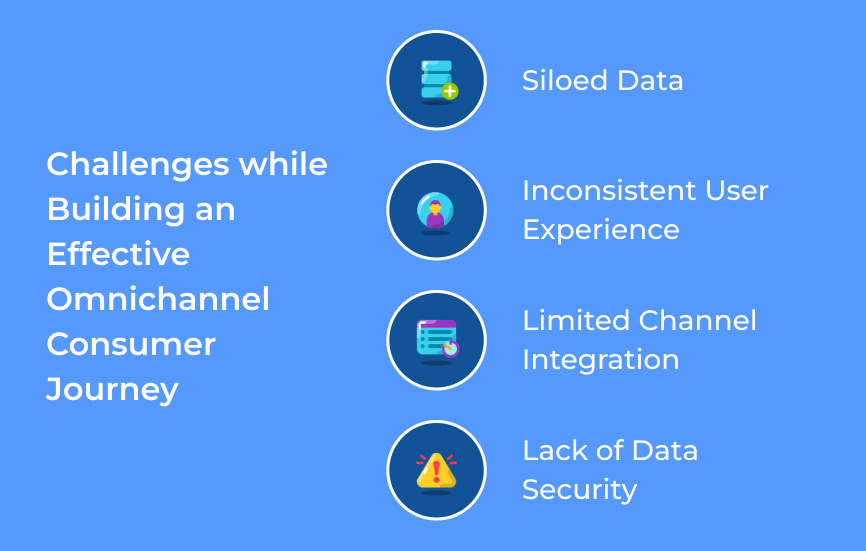
Many brands struggle with integrating data from various channels, resulting in fragmented data silos. One approach to tackle the problem involves investing in a system called Customer Relationship Management (CRM), which consolidates all customer data in one place. Doing so allows businesses to gain valuable insights into their customers’ behavior and preferences, enabling them to improve their overall customer journey.
Creating a seamless user experience(UX) across multiple touchpoints is critical to a successful omnichannel strategy. It’s essential to establish brand guidelines and create templates for all channels to ensure consistency. Consistent messaging, design, and user interfaces across every channel enhance customers’ experience, leading to an increased likelihood of conversions.
Many businesses still operate in channel silos, with each team working independently without coordination or collaboration. Businesses ought to bring together various communication channels. It will enable customers to easily reach out via various channels like email and social media without any hassle.
Customers have significant concerns regarding the safety of their data. Their trust can easily be undermined if their personal information is mishandled. Businesses can adopt strong measures like encrypting data, using multiple authentication steps, and employing tokenization. Safeguarding customer information is vital for establishing trust and nurturing lasting customer connections.
Below are the successful examples of businesses that have effectively executed an omnichannel strategy, demonstrating how a unified customer journey can enhance satisfaction, drive sales and elevate brand loyalty.
Nordstrom is a retail industry leader in omnichannel customer experience. It has integrated its physical stores with its online store to offer customers a seamless shopping experience.
Customers can buy a product online and pick it up from a physical store without any hassle. Nordstrom also integrates technology with its stores, such as digital signage, interactive mirrors, and personal stylist’s services, providing an immersive shopping experience.
Disney’s omnichannel journey starts before guests even enter the theme park. The My Disney Experience app allows visitors to plan their itinerary, view wait times, make dining reservations, and access exclusive content like ride photos.
Once inside the park, the app provides real-time updates and navigation tools for guests. Disney also offers MagicBands, wearable technology that acts as a room key, park ticket, and FastPass+ reservation system all in one.
Nike is a great example of a B2C company effectively implementing omnichannel customer journey management. Nike has an online presence, a mobile app, and physical stores worldwide. It employs information and analysis to recognize what the customer wants.
The company offers a seamless journey by enabling customers to create and save their preferred products on the website. In this example of multi-channel ecommerce, they can later pick them up from a physical store or have them delivered.
Brands need to adopt a holistic approach to effectively reach customers across multiple channels and gain insight into their behavior. It is important to understand your customers’ needs and their journey to supercharge your CX with omnichannel touchpoints. Using advanced technology and analyzing data will help the brands discover the best channels to connect with their desired audience.
A: Omnichannel customer engagement refers to a strategy that integrates multiple channels to provide a seamless and consistent experience for customers, enabling them to interact with a business across various touchpoints.
A: Common channels in an omnichannel strategy customer journey include physical stores, websites, mobile apps, social media platforms, email, phone calls, live chat, and SMS
A: The omnichannel customer journey benefits are multiple like happier customers, stronger customer commitment, more successful sales, improved opportunities for selling related products, and a deeper understanding of customer actions.
Personalization is crucial in an omnichannel journey as it allows businesses to tailor experiences and offers to individual customers’ preferences. It enhances their engagement, customer satisfaction and the likelihood of conversions.
A: Businesses can measure the success of their omnichannel strategy customer journey by analyzing metrics such as customer satisfaction scores, customer retention rates, conversion rates across channels, average order value, and customer lifetime value, and analyzing customer feedback and behavior data collected from various touchpoints.
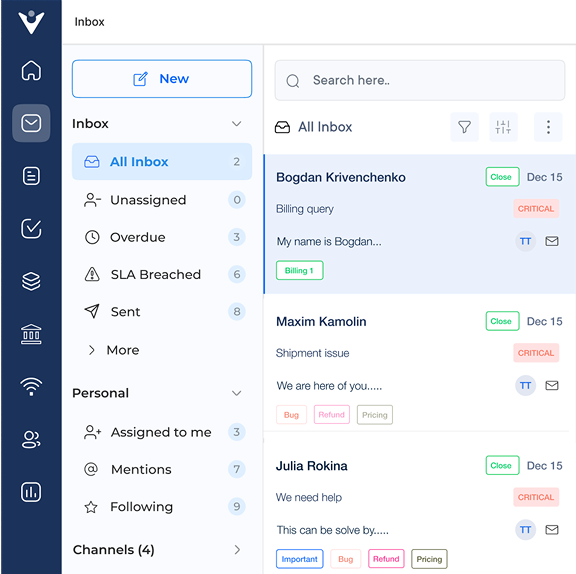
Market better, sell faster and support smarter with Veemo’s Conversation Customer Engagement suite of products.
Unify all your customer data in one platform to deliver contextual responses. Get a 360 degree view of the customer lifecycle without switching tools.
Connect with the tools you love to reduce manual activities and sync your business workflows for a seamless experience.
 https://veemo.io/wp-content/uploads/2024/12/customer-service-response-time.png
1256
2400
indrasish5342@gmail.com
https://veemo.io/wp-content/uploads/2024/11/veemo.svg
indrasish5342@gmail.com2025-10-17 10:51:142025-12-15 05:49:239 Effective Tips to Reduce Customer Service Response Time
https://veemo.io/wp-content/uploads/2024/12/customer-service-response-time.png
1256
2400
indrasish5342@gmail.com
https://veemo.io/wp-content/uploads/2024/11/veemo.svg
indrasish5342@gmail.com2025-10-17 10:51:142025-12-15 05:49:239 Effective Tips to Reduce Customer Service Response Time https://veemo.io/wp-content/uploads/2024/10/How-to-Create-Knowledge-Base.png
1257
2400
Vikas Sachan
https://veemo.io/wp-content/uploads/2024/11/veemo.svg
Vikas Sachan2024-10-21 12:24:342025-12-15 05:58:17How to Create a Knowledge Base in 9 Easy Steps: The Ultimate Guide
https://veemo.io/wp-content/uploads/2024/10/How-to-Create-Knowledge-Base.png
1257
2400
Vikas Sachan
https://veemo.io/wp-content/uploads/2024/11/veemo.svg
Vikas Sachan2024-10-21 12:24:342025-12-15 05:58:17How to Create a Knowledge Base in 9 Easy Steps: The Ultimate Guide https://veemo.io/wp-content/uploads/2024/02/Live-Chat-for-Sales.png
628
1200
Vikas Sachan
https://veemo.io/wp-content/uploads/2024/11/veemo.svg
Vikas Sachan2024-10-21 11:31:222025-12-15 05:58:19How to Use Live Chat for Sales? 7 Proven Ways to Grow Revenue
https://veemo.io/wp-content/uploads/2024/02/Live-Chat-for-Sales.png
628
1200
Vikas Sachan
https://veemo.io/wp-content/uploads/2024/11/veemo.svg
Vikas Sachan2024-10-21 11:31:222025-12-15 05:58:19How to Use Live Chat for Sales? 7 Proven Ways to Grow RevenueGrow Customer Relationships and stronger team collaboration with our range of products across the Conversational Engagement Suite.

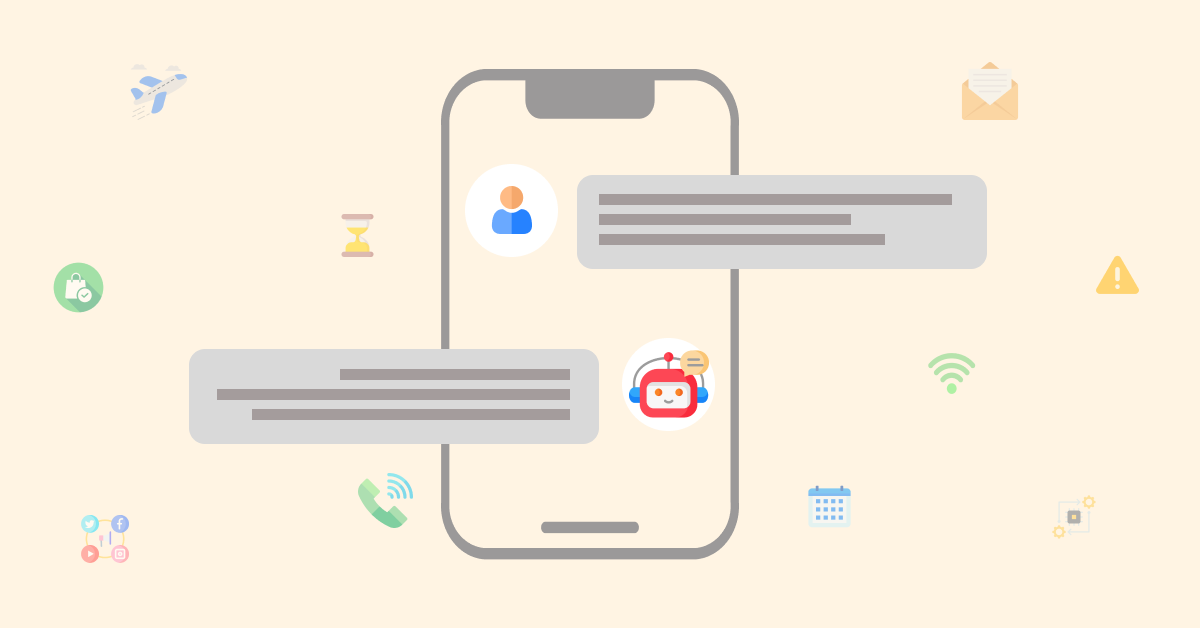 AI Customer Service: Transforming the Way Support Is Delivered
Scroll to top
AI Customer Service: Transforming the Way Support Is Delivered
Scroll to top